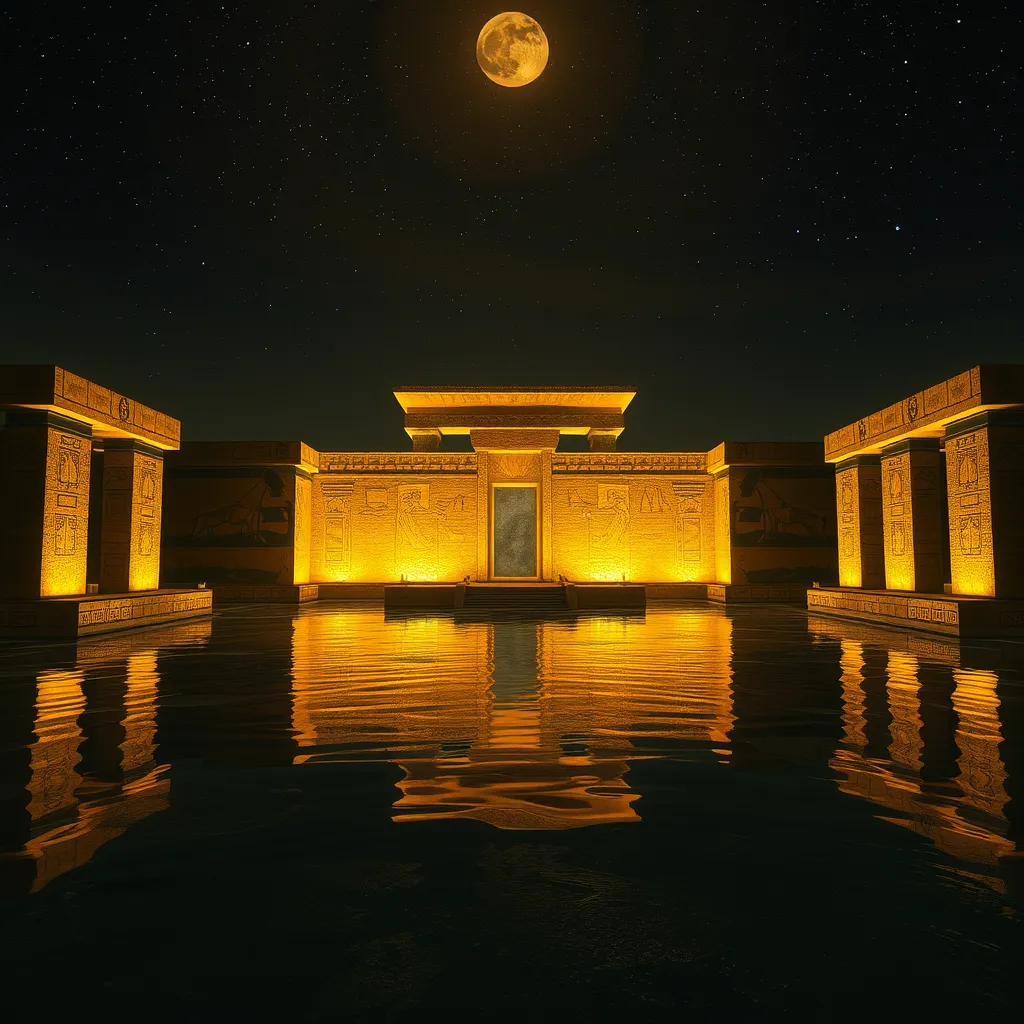The Duat: A Reflection of the Human Condition
I. Introduction
The Duat, in ancient Egyptian mythology, represents the realm of the afterlife, a complex and multifaceted landscape where souls embark on a journey after death. This concept serves not only as a religious and cultural artifact but also as a profound metaphor for the human experience. The significance of the Duat lies in its exploration of the themes of life, death, and the moral trials that define our existence.
This article aims to delve into the Duat as a metaphor for the human condition, examining its historical context, structural features, and its relevance in both ancient and contemporary society.
II. Historical Context of the Duat
The origins of the Duat date back to the early dynastic period of ancient Egypt, evolving over centuries as beliefs about the afterlife became more elaborate. Initially, the Duat represented a dark and foreboding underworld, but it gradually transformed into a more nuanced realm filled with various landscapes and challenges.
The Duat is prominently featured in religious texts such as the “Book of the Dead,” which includes spells and illustrations meant to guide the deceased through the afterlife. Tomb art often depicted scenes of the Duat, showcasing the journey of the soul and the important rituals associated with it. The Duat played a critical role in the afterlife beliefs of the Ancient Egyptians, reinforcing the importance of living a just and virtuous life to ensure a safe passage through its realms.
III. The Structure and Features of the Duat
The Duat is described as a vast, complex landscape featuring various realms that souls must traverse. These landscapes include:
- Rivers: Symbolizing the waters of chaos and renewal.
- Mountains: Representing obstacles and spiritual elevation.
- Gates: Serving as thresholds that souls must pass through, often guarded by deities and challenges.
The symbolism embedded in these elements reflects the trials of life. The journey through the Duat can be seen as a metaphor for life’s challenges, where each obstacle represents a moral or ethical decision that individuals face during their lives.
IV. The Trials of the Soul in the Duat
One of the most significant aspects of the Duat is the judgment process, particularly the weighing of the heart against the feather of Ma’at, the goddess of truth and justice. This trial embodies the concept of personal accountability, emphasizing that one’s actions in life determine their fate in the afterlife.
The significance of moral choices is paramount in the Duat. Souls must confront their past actions, reflecting on how their decisions align with ethical standards. This process mirrors modern ethical dilemmas, where individuals often grapple with the consequences of their choices and the weight of their moral responsibilities.
V. The Duat and the Cycle of Life and Death
The themes of mortality and rebirth are central to the Duat. In ancient Egyptian beliefs, death was not seen as an end but rather a transition to a new phase of existence. The Duat serves as a space of transformation, where the soul undergoes trials before being reborn into a new life.
Comparatively, other cultures have their interpretations of life after death, such as the Christian concept of heaven and hell or the Buddhist idea of reincarnation. The Duat’s unique perspective contributes to a broader understanding of how different societies conceptualize legacy and memory.
VI. The Duat as a Psychological Landscape
From a psychological standpoint, the Duat can be interpreted as a representation of the human psyche. Just as souls navigate the challenges of the Duat, individuals face their inner fears, desires, and struggles throughout their lives. This psychological landscape offers insights into the human condition, suggesting that personal growth often requires confronting one’s inner demons.
Modern psychology provides valuable frameworks for understanding these personal “Duat” experiences, emphasizing the importance of self-reflection and resilience in overcoming life’s obstacles.
VII. Contemporary Reflections on the Duat
The concept of the Duat resonates in modern society, reflecting enduring themes of moral accountability, transformation, and the journey through life’s challenges. In literature, art, and popular culture, the Duat has inspired numerous interpretations, illustrating its relevance in contemporary discourse.
Examples include:
- Literary works that explore themes of death and rebirth.
- Artistic representations that depict the struggles of humanity.
- Films and television shows that incorporate elements of the afterlife and moral choices.
Lessons from the Duat remind us that the journey of life is fraught with challenges, but it is also an opportunity for growth, accountability, and transformation.
VIII. Conclusion
In summary, the Duat serves as a profound reflection of the human condition, encapsulating themes of moral responsibility, the trials of life, and the cyclical nature of existence. Its enduring relevance invites us to reflect on our own journeys and the choices we make.
As we navigate our modern lives, the lessons of the Duat can inform our understanding of personal accountability and the importance of facing our challenges with courage and integrity. The Duat remains not just a mythological construct, but a timeless metaphor for the complexities of human experience.





